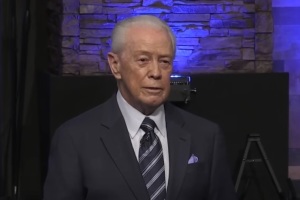Analysis: Race, Religion and Politics Are on a Collision Course That Will Shake Up the Political Parties
Two of the most prominent partisan splits in the United States today, race/ethnicity and religion, are undergoing a generational shift that promises to shake up the traditional alliances that comprise the Democratic and Republican parties. How party leaders choose to respond to this shift could determine the future of American politics for a generation.
A majority of nonwhites support the Democratic Party; a majority of whites support the Republican Party. A majority of those with high levels of religiosity (usually measured by church attendance) support the Republican Party; a majority of those with low levels of religiosity, or no religious affiliation, support the Democratic Party.
These demographic characteristics are not the only ones that describe the differences between the two major political parties. There is the urban/rural gap (urban areas are mostly Democratic and rural areas are mostly Republican), and the gender gap gets much attention these days, for instance. But, the religious participation gap and the race/ethnic gap have been two of the most prominent features of America's two-party system for, at least, the last 10 to 15 years.
What will happen to these partisan gaps, however, as American Christianity becomes less and less white?
In a recent article for On Faith, religion reporter Bob Smientana summarized the coming shift well with data from the Public Religion Research Institute. Only about one in four of America's young (18 to 29-year-old) Christians are white compared to seven in 10 for older Americans. More than half of today's young Christians are people of color. And, young adults today have more "nones," those with no religious affiliation, than white Christians.
America's two party system is a result of its winner-take-all election system. Since political power is gained by winning a plurality of the vote, parties that represent many coalitions, enough to get at least 50 percent plus one of the vote, are encouraged. Parties that are unable to do this, usually called "third parties" or "minor parties," do not have long-term success.
The coalitions that make up each of the two major parties have not remained the same over time. Political parties, designed as they are to win elections, tend to be more practical than ideological. Pragmatism beats purity when winning matters most.
Parties, especially whichever party happens to be losing, will seek to include new groups in its coalition by reaching out to groups that are in the other party's coalition or by mobilizing groups of people who do not vote at a high rate. This is how party coalitions change over time. Some political scientists refer to these changes as "realignment." Realignments do not occur in a single election, but slowly over many elections. (While there are some disagreements about realignment theory among political scientists, there is no disagreement that party coalitions change over time.)
A good example of a realignment occurred in the 1960's with the Republican Party's "Southern strategy." GOP party leaders sought to move white Southerners, a group that voted Democratic in high numbers, into its camp by opposing civil rights reforms. As the party of Abraham Lincoln and opposition to slavery became associated with Jim Crow, blacks moved out of the Republican camp and became loyal Democrats. This realignment led to the current race/ethnicity gap.
Another realignment began in the late 1970's. GOP strategists reached out to conservative Christians, a group that usually voted Democrat or not at all, to include them in their coalition. The mobilization of these mostly white, mostly Evangelical, Christians became known as the "Christian Right" movement. This realignment led to the current religious participation gap.
The current generational shift, where high levels of religiosity will become more closely associated with non-whiteness and where secularism becomes mostly a "white thing," promises to undo those old alignments, now 50 and over 30 years old, respectively.
So, what happens next? That will depend, ultimately, on how party leaders choose to respond to these shifting demographics. Will Democratic leaders ditch the anti-religion and anti-Christian voices in their ranks to avoid offending those with religious sensibilities? Will Republican leaders push out the anti-immigrant voices and racist sentiments in their ranks in order to build a "rainbow coalition"? We will see.




























